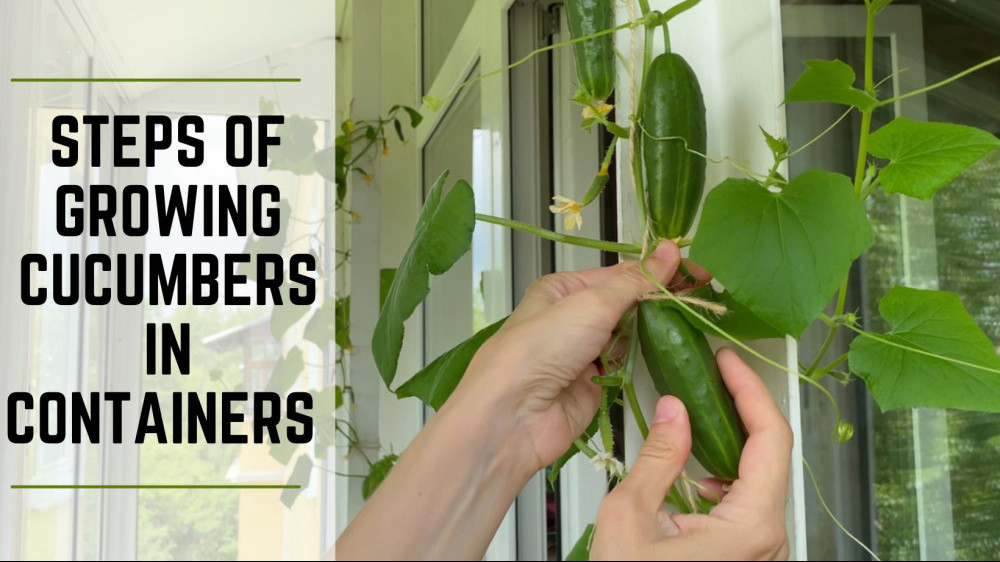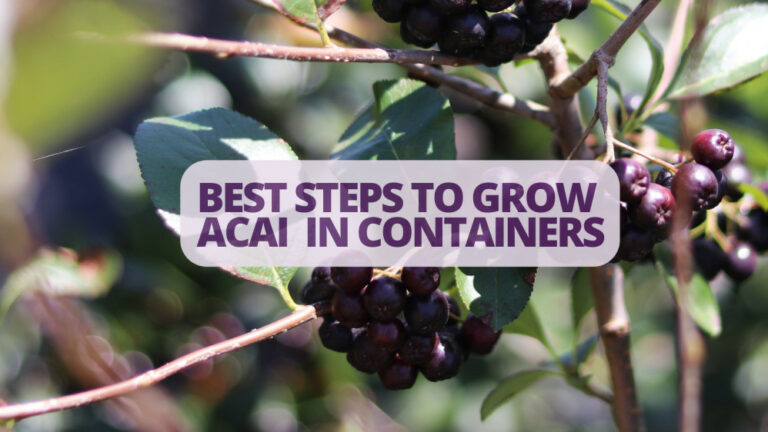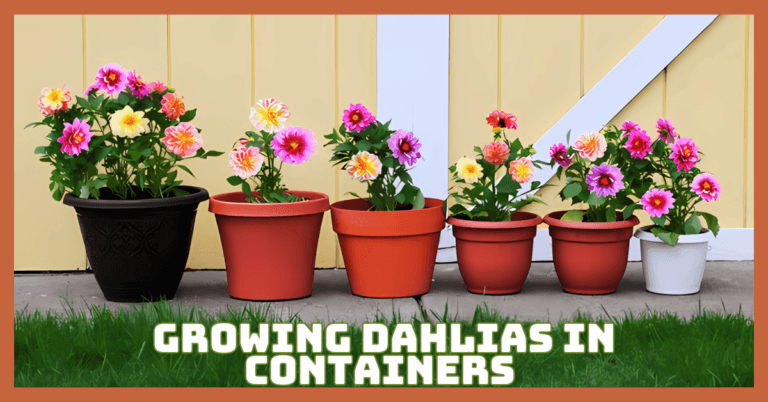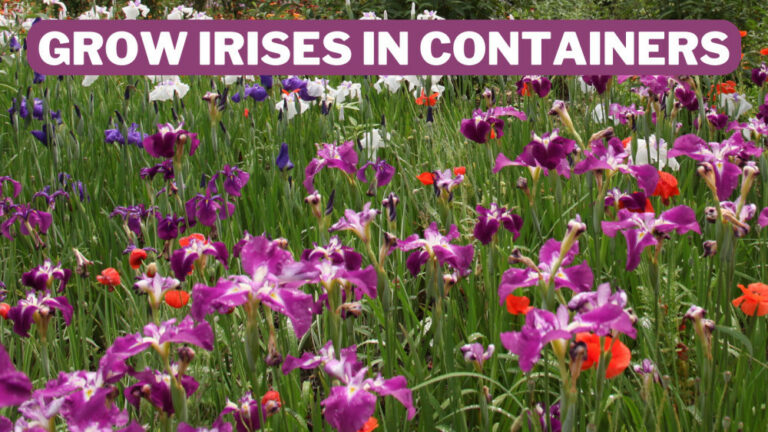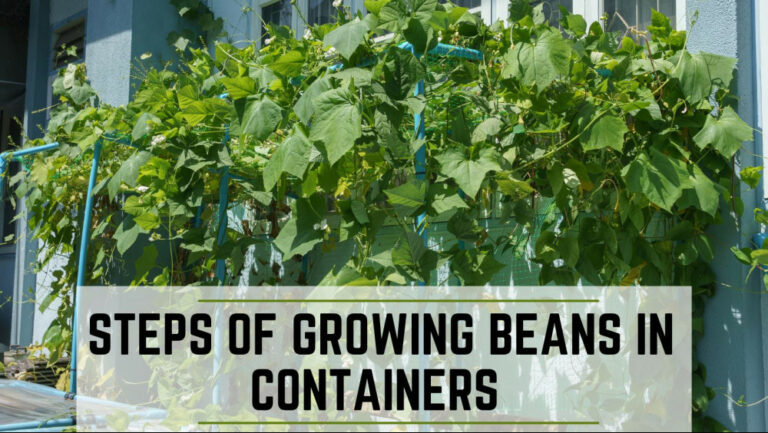10 Easy Steps Of Growing Cucumbers In Containers
10 Easy Steps Of Growing Cucumbers In Containers
Cucumbers may be grown in containers despite their sprawling vines. Choose a small variety and train the vines up a trellis to get the best results. The crop grows tall, saving space and making harvesting a breeze.
Furthermore, growing cucumbers in pots allows you to offer them the extra heat they crave while also controlling moisture and fertility.
Summer squash, winter squash, gourds, and melons are all members of the Cucurbitaceae family, which also contains cucumbers.
Like their relatives, cucumbers are voracious eaters. They require warmth, healthy soil, and continuous moisture.
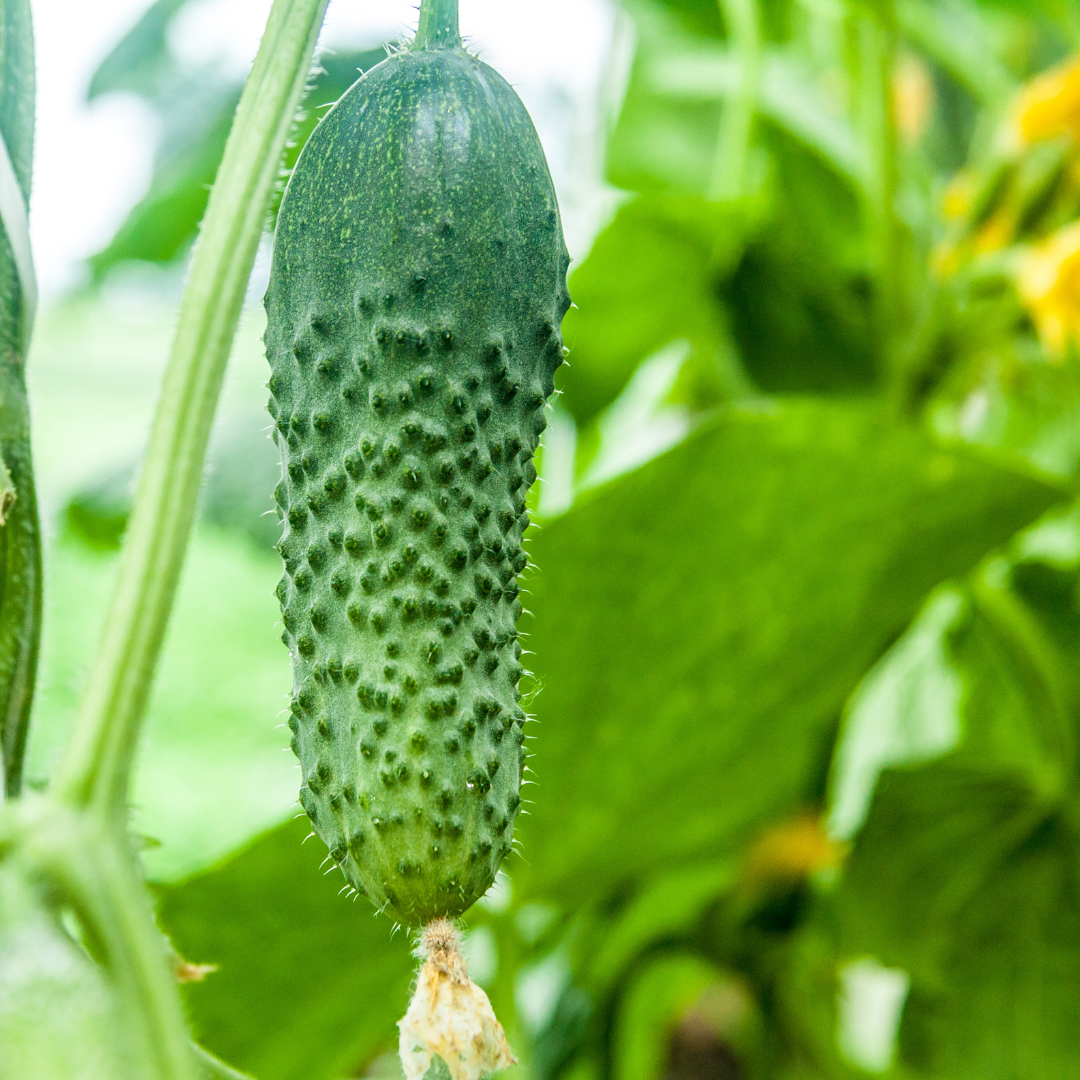
History & Origin Of Cucumbers
Cucumber (Cucumis sativus) is a Cucurbitaceae family member. Watermelon, muskmelon, pumpkin, and squash are also prominent family members.
Cucumber, a native of India, is another of our earliest vegetables. According to cave excavations, it has been farmed as a food source for over 3000 years.
Cucumbers were presumably bitter at first because of compounds known as cucurbitacins. These natural defensive chemicals repel insects and other pests.
Bitterness is still a concern with some cucumbers despite plant breeders' significant progress in eliminating bitter chemicals.
According to the Bible, cucumbers were grown and eaten in ancient Egypt. The Egyptians manufactured weak liquor from cucumber by cutting a hole in the ripe fruit, liquefying the contents with a stick, closing the hole, and burying it for many days.
The mixture that resulted was uncovered and drunk. “Don't try this at home,” the previous sentence should presumably be followed with.
Nutrition Facts About Cucumbers
A half-cup of sliced cucumber (52g) contains 8 calories. Cucumbers are high in potassium, as well as vitamins K and C. The (USDA) has provided the following nutritional information.
- Calories: 8
- Fat: 0.1g
- Sodium: 1mg
- Carbohydrates: 1.9g
- Fibre: 0.3g
- Sugars: 0.9g
- Protein: 0.3g
- Vitamin K: 8.5mcg
- Vitamin C: 1.5mg
- Potassium: 76.4mg
- Protein: 0.3 grams
- Fat: 0.1 grams
- Carbs: 1.9 grams
Cucumber is a low-calorie, mostly water-based food to help you meet your hydration objectives. Potassium and vitamins K and C are among the minerals found in this crop.
10 Top Varieties Of Cucumbers For Containers
Is there no place to grow? Before starting to grow cucumbers in containers, you should learn all varieties of cucumbers for your pot gardening,
Cucumbers can still be picked fresh for a cold salad. Although cucumber vines can become twisted and wild in containers, cucumbers are well-suited to container cultivation in general.
The cucumber, or Cucumis sativus, is a common Cucurbitaceae plant. Squash and bitter melon are two more famous members of this family.
1. Ashley Cucumbers
This heirloom cultivar yields dark green, six to eight-inch fruits with a slight taper on the stem. In 1956, the South Carolina Truck Experimental Station in Charleston produced ‘Ashley,' a vining cultivar for the southern fresh food market. It sounds like a mix of ‘Puerto Rico 40' and ‘Marketer.'
2. Burpless Cucumbers
This hybrid vining type produces thin fruits up to 12 inches long, best plucked when 8 or 10 inches long.
This variety has thin, dark green skin and mild meat with little bitterness. It is resistant to downy mildew and mosaic virus.
Staking or trellising is required for long vines. Regular harvesting will encourage the vines to produce more fruit, which will be available in 50 days.
3. Bush Champion Cucumbers
On compact bushes, Bush Champion yields an abundance of eight to eleven-inch fruit. This hybrid bush cultivar yields straight, crisp, vibrant green cucumbers in 60 days. This Burpee special is mosaic virus resistant and perfect for container or raised bed planting.
4. Dasher II Cucumbers
Dasher II is a disease-resistant dark green hybrid cultivar. Vigorous vines produce slender, eight-inch white-spined fruit in 55-60 days.
For simple harvesting, grow straight, uniform fruits on a fence or trellis. These fruits are highly resistant to scab and moderately resistant to mosaic virus, leaf spot, and powdery mildew.
5. Diva Cucumbers
Diva is a hybrid cultivar that produces semi-glossy, thin-skinned fruits six to eight inches long and won the All-America Selections award in 2002.
The ‘Diva' cultivar has a sweet, mild flavour and is mostly seedless. In 58 days, high yields on robust vines are ready to harvest. This cultivar is also resistant to scab and tolerates downy and powdery mildew.
6. Early Pride Cucumbers
The hybrid cultivar ‘Early Pride' produces dark green, straight fruits eight to nine inches long. Burpee's plants have gained resistance to powdery mildew and the mosaic virus.
Vines vigorously climb a trellis or frame and provide a high crop. Burpless cucumbers have a mild flavour and can be harvested in 55 days.
7. Fanfare Cucumbers
‘Fanfare' is a hybrid cultivar that yields 8-9 inches long, thin, consistent fruits with excellent texture and flavour.
In just 63 days, semi-determinate vines with a height of two to two and a half feet produce large yields.
This 1994 All-America Selections winner has deep green skin and sweet flesh, making it excellent for patio container growing.
8. Marketer Cucumbers
The open-pollinated variety ‘Marketer' has a sweet, mild flavour. In 1943, it won the All-America Selections award in the edibles category, making it ideal for hot, humid Southern climates.
Dark green, smooth, thin fruits grow eight to nine inches long on vigorous vines and are ready to harvest after 55 days.
Associated Seed Growers in Connecticut developed ‘Marketer,' a hybrid between ‘Straight Eight' and ‘Vaughan.' It was initially introduced in 1942.
9. Marketmore 76 Cucumbers
The heirloom Marketmore 76 cultivar is a popular heirloom with outstanding disease resistance. Its fruits are eight to nine inches long, dark green, slender, thick-skinned, and mature in 67 days.
Dr. Henry Munger produced the initial ‘Marketmore' variety at Cornell University in 1968. Then, in 1976, he released ‘Marketmore 76,' a strong, open-pollinated breed.
With a small seed cavity and a crunchy bite, this variety is great for slicing and pickling. This is a consistent producer in warmer areas and is resistant to powdery and downy mildew, leaf spot, mosaic virus, and scab.
10. Sweet Success Cucumbers
Sweet Success is a seedless cucumber cultivar that yields thin-skinned, 12- to 14-inch fruit with a moderate, sweet flavour.
‘Sweet Success,' an edible All-America Selections winner from 1983, thrives on strong vines and is ready to harvest in just 54 days.
Sweet Success should be planted on a trellis or anchored. This type resists mosaic virus, scab, powdery mildew, and leaf spot.
The 10 Steps Of Growing Cucumbers In Containers
Cucumber is a creeping vine with roots in the ground. It uses tendrils to climb trees. If not supported, it grows horizontally, sprawling along the bottom.
According to science, a cucumber is a fruit, a sort of pepo berry with a strong rind and no internal divisions.
However, like tomatoes and squash, most people consider it a vegetable and consume it as such.
Cucumbers have a pleasant, refreshing flavour and are made up of up to 90% water. The fruit is low in fats, calories, salt, and cholesterol and delivers various nutrients.
Like many other fruits and vegetables, cucumbers taste better at home. Cucumbers in pots are easy to cultivate and can be highly rewarding if you select the right variety.
However, a few factors should be kept in mind. To grow cucumbers in containers, follow these major steps.
1. Choose The Right Container For Growing Cucumbers
Cucumbers require large pots with enough soil so that plants can develop huge root systems and produce plentiful crops.
For each plant, select a container that can hold at least 5 gallons (or 20 quarts) of soil; a larger container is preferable.
Self-watering planters are especially beneficial for cucumbers since they protect them from drying out.
Because of the built-in reservoir, self-watering pots don't dry out as rapidly. You'll still need to monitor the moisture level, but there will be longer between waterings.
2. High-Quality Potting Soil For Growing Cucumbers
Rich, nutritious soil will feed your plants and retain more moisture than poor soil. Ordinary garden soil, which does not drain adequately when utilized in a container, should not be used.
3. Choose A Cucumber Variety That Is Small In Size
To choose the best seeds for small-space gardening, read the seed packs. The following is a list of several kinds.
4. Choose A Sunny Spot For Growing Cucumbers
Cucumbers love the sun, so choose a spot with at least 8 hours of direct sunlight daily. Because most types are heat tolerant, they thrive on a bright, sunny, south-facing wall. However, think about how easy it will be to water and harvest in that spot.
Consider your trellis alternatives for each potential place as well. Vining cuts necessitate a tall trellis–up to 8 feet tall–or enough space to stretch out along the ground. Bushy cucumbers, on the other hand, will extend their leaves over only a few feet.
5. Don’t Start Planting Cucumbers Too Soon
Cucumbers thrive in hot climates. Should I wait until the weather warms up before planting outside?
After the last spring frost, generally a week or two, seeds can be sown indoors a few weeks before planting them outside for a head start.
Use biodegradable pots to avoid transplant shock. Pop-up covers can also help extend the season.
6. Make Use Of A Trellis While Growing Cucumbers
Cucumbers' vining nature makes use of vertical space. A tomato cage can also be used as a trellis.
Feed your plants regularly. At planting time, amend the soil with granular fertilizer, followed by liquid fertilizer throughout the growing season.
7. Check The Soil Moisture Every Morning
What's the best technique to maintain container plants alive and well? Develop an excellent sense of watering.
Check the soil wetness with your finger before watering. If the surface is dry, wet it thoroughly. If the soil is damp, wait until it feels dry and is slightly moist below the surface before watering again.
Water in the morning, unless it's likely to rain because plants need the most water during the day when they're busy photosynthesizing and transpiring (releasing water from their foliage).
8. Watering Cucumbers In Containers
Cucumbers require a steady supply of water to yield the best fruits. If plants are water-strained and allowed to wilt between waterings, the fruits can become bitter.
Vegetables grown in containers require more frequent watering than plants grown in the ground, so monitor moisture levels and water when the soil seems dry. Depending on the weather and the size of the container, this could be every day in the summer.
9. Fertilizing Cucumbers In Containers
Because cucumbers are big feeders, I use a slow-release organic fertilizer in the potting mix when I plant them.
This ensures a consistent supply of food throughout the growing season. I also supplement with diluted liquid kelp fertilizer or compost tea.
10. Plant Cucumbers Vertically In Containers
Cucumbers can be grown vertically, even in containers, for various reasons. Mature plants have improved airflow around their leaves, which reduces the incidence of many diseases.
Growing them on a deck or patio support takes up less space and keeps your outdoor living area neater.
It also makes harvesting the fruits easier. Long-fruited cucumbers, such as the English or Asian varieties, also grow straighter.
Cucumbers of all types, even bush varieties, benefit from support. I use tomato cages for bush cucumbers that grow quickly and trellises, netting, or ropes for vining kinds that can grow seven feet or more.
11. Pests & Diseases Of Cucumbers
Cucumbers are simple to grow and don't have many complications, right? However, there are a few things to keep an eye on:
1. Powdery Mildew
Powdery mildew appears as a fine white powder on leaf surfaces. It usually occurs when the weather is humid, and the plants are stressed; proper air circulation can help prevent it.
If you find the condition, remove any leaves that are seriously afflicted and attempt one of these two DIY remedies:
- One teaspoon of baking soda, one drop of dish soap, and one quart of water are mixed and sprayed on the plants. The mixture raises the pH of leaf surfaces, making spores less attracted to them.
- To make a foliar spray, combine 1 part of the cow's milk with 9 parts of the water. The enzymes in milk are supposed to keep the fungus at bay.
- Cucumbers of all types, even bush varieties, benefit from support. I use tomato cages for bush cucumbers that grow quickly and trellises, netting, or ropes for vining kinds that can grow seven feet or more.
The most prevalent cucurbit pests are cucumber beetles and squash bugs. Yellow and black cucumber beetles have voracious appetites and travel swiftly, but you can spray neem oil on them (or vacuum them) to kill the orange eggs they lay on the undersides of leaves.
2. Squash Bugs
Squash bugs are huge, brown, shield-shaped insects with a slow movement rate. They are simple to pick off and put into soapy water.
Squash bugs are huge, brown or gray insects that feed on cucumber juices from the leaves and stems. They are lethargic and easy to pluck and discard in soapy water.
Because insects are typically disease vectors, controlling these pests also aids disease prevention.
TIP: Cover new seedlings with garden fabric or covers until new seedlings flower. Be patient if the first group of blooms that appears merely fades away and does not produce fruit.
Male flowers are frequently the first blossoms of the season. Female blooms (with a small bulge at the base) will develop shortly afterward.
3. Cucumber Beetles
Cucumber beetles, both yellow and black, are swift and destructive. They can eat both leaves and fruit. They are, thankfully, simple to manage.
To control them, spray them with neem oil and kill the orange eggs they lay on the undersides of leaves.
Another approach to keeping bugs away is to cover your seedlings with garden textiles until they start to flower. Some pests are disease vectors. This emphasizes the importance of pest management.
Any plant you want to grow in your yard might be a difficult but rewarding task. With so many variables and unknowns, determining if you are on the correct road on any given summer day can be difficult.
Conclusion
If you want to start growing cucumbers in containers, sow them for three to four weeks before transplanting them to their pots.
Planting too early inside leads to overgrown plants that may attempt to blossom and fruit while still inside. These will be tough to transplant and will never produce as much as possible.
When you're ready to plant your cucumber seedlings outside, carefully remove them from their pots and tuck them into the potting mix, not disrupting the rootball.
Despite their vast vines, cucumbers can be grown in containers. Choose a small variety and train the vines up a trellis to get the best results.
The crop grows tall, saving space and making harvesting a breeze. Furthermore, growing cucumbers in pots allows you to offer them the extra heat they crave while also controlling moisture and fertility.
I trust you enjoyed this article on the 10 Easy Steps of Growing Cucumbers in Containers. Please stay tuned for more blog posts soon. Take care!
JeannetteZ
>>>Please click here to read my all-inclusive article, About The Essential Companion Planting Guide<<<
>>>Please click here to read my all-inclusive article about Container Gardening<<<
Are you interested in homegrown herbs and medicine? Please click here to find out more about it!
Your Opinion Is Important To Me
Do you have thoughts, ideas, or questions? I would love to hear from you. Please leave me your questions, experiences, and remarks about this article on the 10 Easy Steps Of Growing Cucumbers In Containers in the comments section below. You can also email me at Jeannette@Close-To-Nature.org.
You might also enjoy these blog posts:
Find The Best Fruit For Container Gardening
12 Best Flowers To Grow In Your Container Garden
8 Easy Steps Of How To Grow Beets In Containers
9 Easy Steps To Grow Roses In Containers

